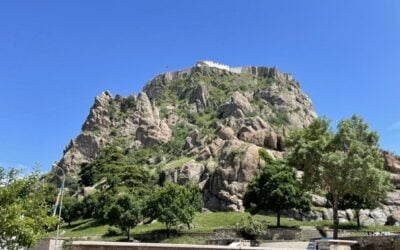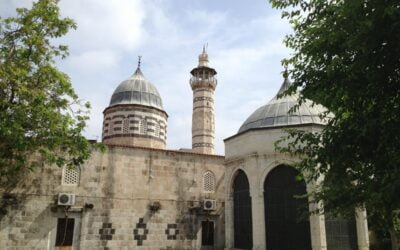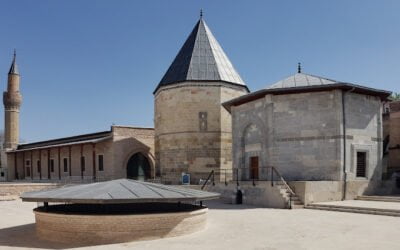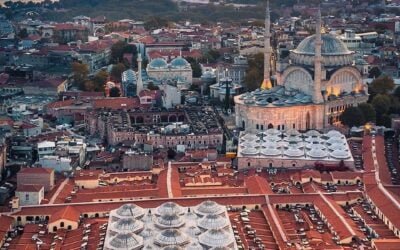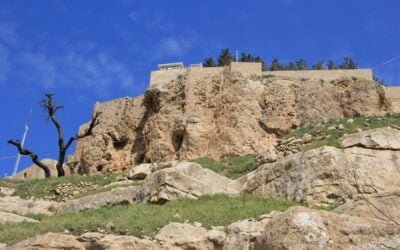Sivas Grand Mosque
- Located on the slopes beneath Divriği Castle in Sivas Province, central eastern Turkey, the Great Musjid and Hospital of Divriği is a remarkable building combining a monumental hypostyle Musjid with a hospital.
Built in 1228-1229, the complex was commissioned by the Mengücekid emir Ahmed Shah following the Seljuk Turks’ triumph over the Byzantine Empire at the Battle of Manzikert in 1071, a pivotal moment that enabled the Turks to solidify their presence in Anatolia. - The Musjid’s design is remarkable for its size and decorative intricacy. Its most striking external feature is the hexagonal dome that rises above the mihrab, the niche that indicates the direction of prayer. A cupola is also set above the ablution area, where worshippers cleanse themselves before prayer. The Musjid’s north and west entrances are framed by highly detailed stone-carved portals, which are masterful works of medieval Islamic art. Inside, four rows of piers divide the space into five naves, each roofed by ornately carved stone vaults, reflecting the Seljuk style that dominated Anatolia during this period.
- In addition to its religious significance, the Musjid is notable for its minaret, which was added in 1197 by Kutbuddin Meliksah, son of Sultan Kilicarslan II. Though modest in size, the minaret’s 117-centimeter tilt makes it a distinctive feature, comparable in fame to other leaning towers, and a marvel of early Anatolian Islamic architecture.
- Next to the Musjid is the hospital, or Darüşşifa, which was established by Ahmed Shah’s wife, Turan Melek, and designed by architect Hurrem Shah. The hospital’s western entrance mirrors the grandeur of the Musjid, with its own elaborately carved stone portal. Upon entering, visitors are greeted by a spacious atrium with a central pool, surrounded by hospital rooms. A large dome with an oculus sits overhead, allowing light to filter into the space, creating an atmosphere of serenity that reflects the hospital’s dual role in healing both the body and soul.
- Historically, the Great Musjid and Hospital reflect the prominence of Divriği as a cultural and political center under the Mengücekid dynasty. This combination of Musjid and hospital in a single complex is rare in Islamic architecture, highlighting the region’s advanced approach to integrating faith, community, and healthcare during the 13th century.
Although the complex has undergone several restorations, particularly between the 15th and 19th centuries, and again in the 20th century to address structural issues, it retains much of its original design and materials. These efforts have preserved its authenticity and ensured that the complex continues to convey its historical significance. Today, the Great Musjid and Hospital of Divriği are recognized as a UNESCO World Heritage Site for their outstanding universal value, representing a unique fusion of architecture, history, and artistry from the height of the Seljuk era.
-
This monumental site stands as a testament to the ingenuity of its builders and the rich cultural history of Anatolia during the medieval period, offering a window into a time when religion, art, and science were deeply interconnected in the daily life of the community.

